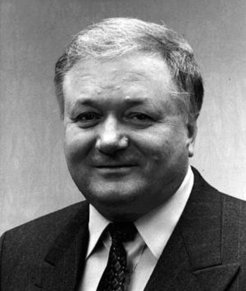Crafoord Prize 2008 awarded to Rashid Sunyaev
The Max Planck scientist is awarded the prize for his research into black holes and neutron-stars
The Crafoord Prize for astronomy goes this year to Rashid Sunyaev, Director at the Max Planck Institute for Astrophysics in Garching. The Royal Swedish Academy of Sciences honours international fundamental research in various disciplines, among others in astronomy. Sunyaev will receive half of the total prize money of 500,000 dollars (342,000 Euros).

Rashid Sunyaev, director of the Max Planck Institute for Astrophysics, has been awarded with this year’s Crafoord Prize in Astronomy. The Crafoord Prize is awarded annually by the Royal Swedish Academy of Sciences and is intended to promote international basic research in several disciplines, including astronomy.
The Crafoord Prize 2008 combines abstract mathematics and astrophysics. It is awarded for mathematical discoveries that are significant for the fundamental laws of nature and for research on black holes and the early Universe. The Royal Swedish Academy of Sciences has decided to award the Prize with one half (mathematics) jointly to Maxim Kontsevich, Institut des Hautes Études Scientifiques (IHÉS), Bures-sur-Yvette, France, and Edward Witten, Institute for Advanced Study, Princeton, NJ, USA, "for their important contributions to mathematics inspired by modern theoretical physics", and the other half (astronomy) to Rashid Alievich Sunyaev, Max Planck Institute for Astrophysics, Garching, Germany, and Space Research Institute (IKI) of the Russian Academy of Sciences, Moscow, Russia "for his decisive contributions to high-energy astrophysics and cosmology, in particular processes and dynamics around black holes and neutron stars and demonstration of the diagnostic power of structures in the background radiation".
The official citation by the Royal Swedish Academy of Sciences says: "The laureate in astronomy, Rashid Sunyaev, has studied the most extreme processes in the Universe and developed theoretical models of how black holes devour matter and the origin of the structure of the cosmological background radiation. His description of how matter drawn towards a black hole forms a thin, rapidly rotating disc is essential if we are to understand how black holes can be the most powerful sources of radiation in the Universe. Sunyaev´s work with the cosmological background radiation has inspired measurements that provide clues to the creation and structure of the Universe. This radiation derives from a period when the Universe was only a few hundred thousand years old and contains information about what happened during the Big Bang. On its journey to us the radiation has also been influenced by the distribution of matter in clusters of galaxies billions of years later."
Professor Rashid Sunyaev is director at the Max Planck Institute for Astrophysics in Garching. He is actively working in the fields of physical cosmology and high energy astrophysics. The prime focus of his studies today is the cosmological recombination of hydrogen and helium, physics of accretion onto relativistic compact objects and current and future X-ray and gamma-ray space missions.
